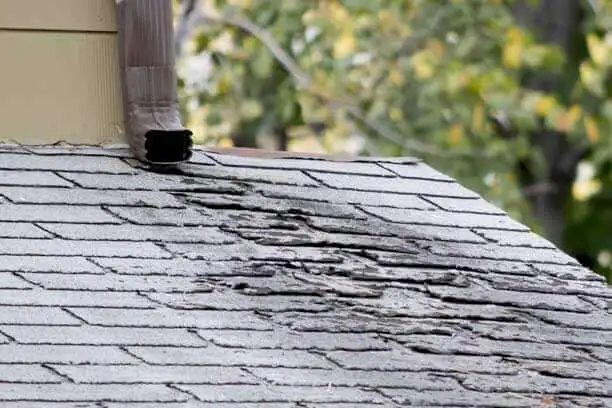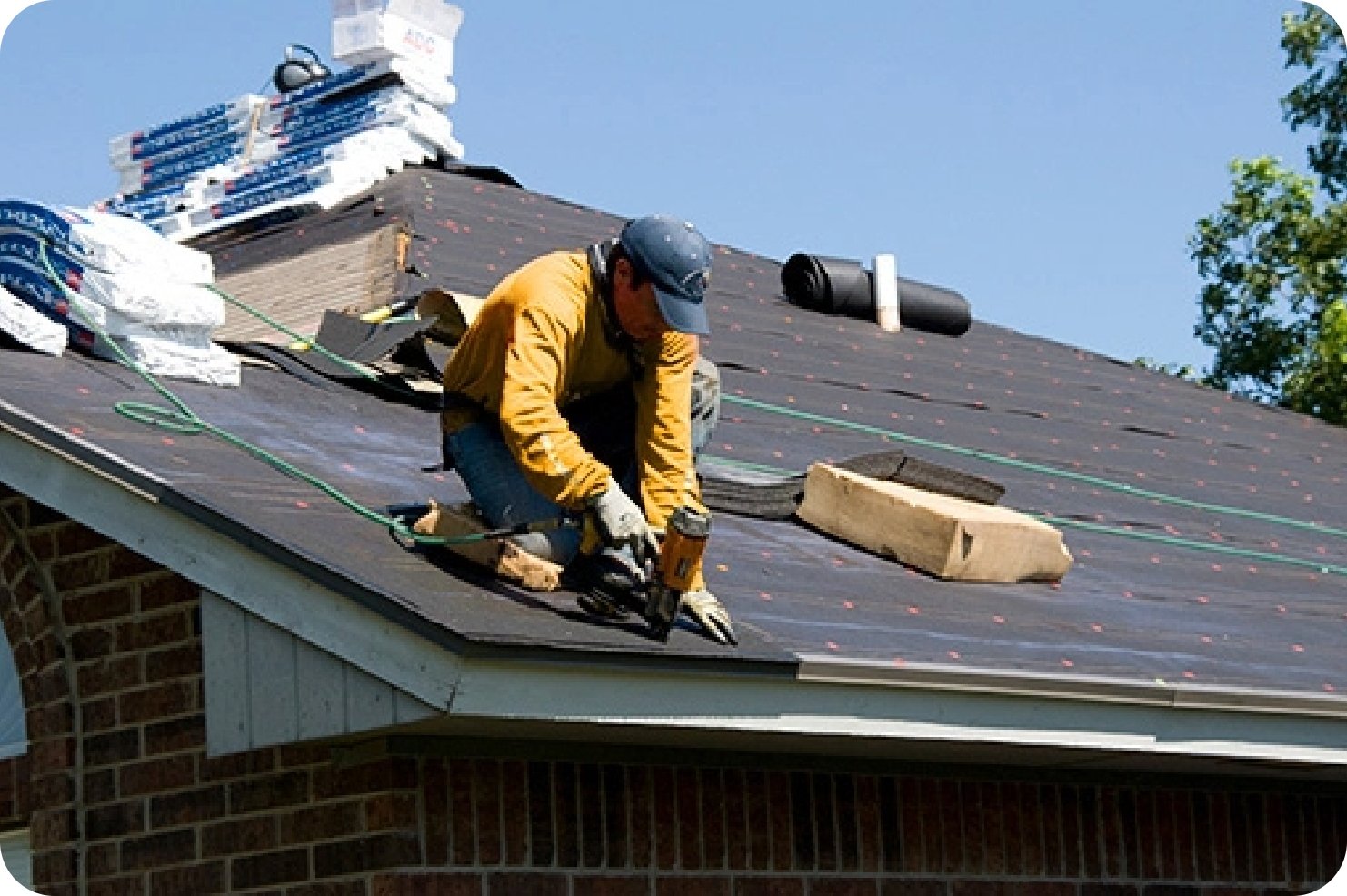Preventative Roof Maintenance: Tips to Prevent Costly Fixings
To stay clear of pricey repairs, you must check your roof covering regularly read this for missing out on or harmed roof shingles, tidy your seamless gutters and downspouts to prevent clogs, and trim overhanging branches. These basic steps can substantially extend your roof covering's life-span, and there's lots more you can do to shield your financial investment.
Check Your Roofing Routinely
When you inspect your roofing on a regular basis, you can catch potential issues prior to they come to be expensive repairs. Start by examining for missing, fractured, or curling tiles; these are indicators that your roof covering might require focus.
After a tornado, it's important to examine your roof covering for damage triggered by high winds or heavy debris. Don't forget to inspect the bottom of your roofing system in the attic; try to find indications of dampness or mold, which can suggest leaks. You ought to additionally watch out for granules in your rain gutters, as they can signify roof shingles damage. By taking these actions, you'll extend your roofing's lifespan and save on your own from unexpected costs. Regular inspections are key to maintaining a healthy and balanced roofing.
Tidy Gutters and Downspouts
Normal roof inspections normally result in an important task: cleansing your gutters and downspouts. Clogged up rain gutters can create water to support, resulting in prospective roof covering leaks and architectural damages. To avoid these issues, make it a habit to examine your gutters at least two times a year, specifically after hefty tornados or drop when leaves accumulate.
Do not fail to remember to check downspouts for blockages. If water isn't flowing openly, you may require to make use of a plumber's snake or a pipe to remove the obstruction.
Address Overhanging Branches
Looming branches can position a significant danger to your roofing, so it's vital to trim them on a regular basis. Not only can they trigger damage throughout storms, however they can also invite pests. Make it a habit to evaluate for any signs of wear or damages to maintain your roof in leading form.
Trim Frequently
One of the most vital actions in roof maintenance is to trim those branches that hang as well near to your home. Overhanging branches can trigger severe problems, from particles build-up to potential damage throughout storms. Frequently reducing these branches maintains your roofing clear and reduces the threat of insects and leakages. Make sure to examine the wellness of the trees around your home; weak or dead branches present an even greater threat. Aim to cut branches at least six feet away from your roofline, ensuring they will not come into contact with your roof shingles. You don't require to tackle this task alone; working with a professional arborist can guarantee secure and effective cutting, safeguarding your roof and improving your home's general appearance.
Check for Damages
 roof repair
roof repair
Look for Harmed or Missing Tiles
It's important to inspect your shingles frequently for any damages or missing items. Change missing shingles quickly to avoid further troubles if you spot any kind of problems. Also, keep an eye on just how the climate affects your roof, as rough conditions can bring about wear and tear.
Inspect Regularly for Damages
Frequently checking your roof for damages is important to preserving its honesty and lengthening its life expectancy. Inspect your roof after solid winds or heavy tornados, as these conditions can remove or damage tiles. By making roofing examinations a regular part of your upkeep routine, you can catch problems early and conserve on your own from costly repair work down the line.
Replace Missing Out On Roofing Shingles Immediately
After inspecting for any kind of damage during your evaluations, you might discover that some tiles are missing or endangered. Don't wait to replace them; punctual activity can stop more problems. Missing tiles expose your roofing to wetness, which can bring about leaks and even more substantial damage with time.
Make sure to make use of shingles that match your roof's shade and design for a smooth appearance. Keeping your roof covering in leading shape is vital for protecting your home and preventing pricey repair services down the line.
Display Climate Impact Frequently
As storms roll through your area, keeping a close eye on your roofing ends up being necessary. After each tornado, take a minute to inspect your roof for any type of damaged or missing out on tiles. Climbing onto the roof covering isn't constantly needed; you can often detect troubles from the ground with field glasses.
 roof repair
roof repairGuarantee Proper Air Flow
While several property owners concentrate on the exterior and structural facets of their roofs, assuring appropriate air flow is important for maintaining its durability and performance. Poor air flow can lead to warmth buildup and moisture accumulation, which can trigger damage gradually. Ensure your attic room has sufficient airflow by setting up soffit vents and ridge vents. This configuration enables a constant flow of fresh air, assisting to regulate temperature and lower humidity levels.
Examine your vents regularly to assure they're not blocked by insulation or debris. If you discover any signs of mold or mildew, it could indicate inadequate air flow. In addition, take into consideration using a powered ventilator if your home has problem with air flow. Proper air flow not only boosts your roof covering's life expectancy however likewise boosts energy efficiency, maintaining your home comfy year-round. By taking these actions, you're buying your roof covering's health and wellness and avoiding costly repair services down the line.
Look for Indicators of Leakages
Correct ventilation helps avoid wetness build-up, yet also with great air flow, it is necessary to keep an eye out for indications of leakages. Start by examining your ceilings and wall surfaces for water stains or discoloration, which can indicate a leak above. Do not fail to remember to examine your attic for moist areas, mold, or mold, as these can be very early indication. Look for peeling paint or gurgling wallpaper, as well; these commonly signal dampness intrusion.
Outside, analyze your roof for missing roof shingles, fractures, or damaged blinking, as these susceptabilities can lead to leakages. Frequently checking for these indications will help keep your roofing system's integrity and maintain your home completely dry and risk-free.
Set Up Expert Examinations
 roof repair
roof repair
Aim for a minimum of one examination per year, preferably in the spring or autumn, to straighten with seasonal changes. During these examinations, specialists can determine potential hazards like missing out on roof shingles, compromised flashing, or indications of mold. They'll additionally check for debris build-up that might result in water pooling.
Don't wait for noticeable indications of problem; taking positive actions can extend your roof covering's life expectancy. Spending in routine inspections not just protects your home yet additionally gives you comfort recognizing your roof remains in great problem.
Regularly Asked Concerns
How Commonly Should I Do Roof Inspections?
You must carry out roofing system assessments at the very least two times a year, ideally in springtime and autumn. Routine checks help you spot possible problems early, saving you money and time on pricey repair services down the line.
What Devices Do I Need for Roof Upkeep?
For roofing system upkeep, you'll require a tough ladder, safety and security harness, roofing nails, a hammer, an utility knife, caulk, a trowel, and a flashlight. Don't forget handwear covers and safety goggles to keep on your own safeguarded!
Can I Clean My Roof Myself?
Yes, you can cleanse your roof on your own. Simply make particular you have the right tools, use safety equipment, and adhere to appropriate strategies. It is very important to be careful to prevent accidents and ensure efficient cleansing.
How Can I Determine Roofing Leaks Early?
To determine roof leakages early, you'll intend to examine your roofing frequently. Look for water spots, mold, or missing out on tiles. Take note after heavy rain, and don't wait to check the attic for moist places.
What Are the Indicators I Required a New Roof?
You'll need a new roof if you see curled or missing out on roof shingles, persistent leakages, or water spots on ceilings. In addition, if your roofing system's age goes beyond 20 years, it's smart to contemplate replacement quicker as opposed to later.
To avoid pricey fixings, you need to inspect your roofing system regularly for missing out on or damaged tiles, clean your downspouts and rain gutters to prevent obstructions, and trim overhanging branches. Missing tiles subject your roof to moisture, which can lead to leakages and more extensive damages over time.
After each storm, take a moment to check your roof for any damaged or missing out on shingles.Outdoors, examine your roof covering for missing roof shingles, splits, or harmed flashing, as these vulnerabilities can lead to leaks.To identify roof covering leakages early, you'll want to check your roofing on a regular basis.